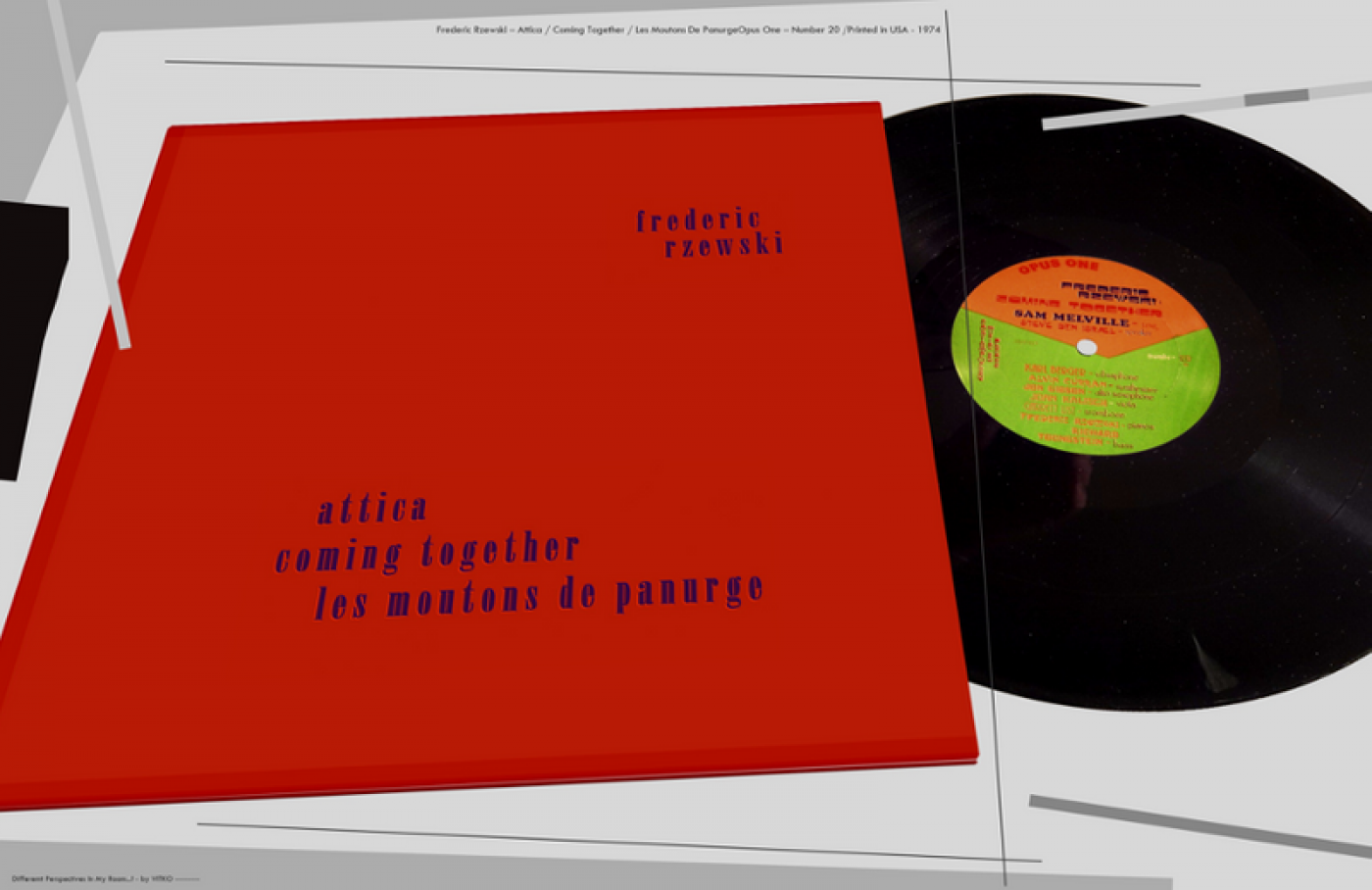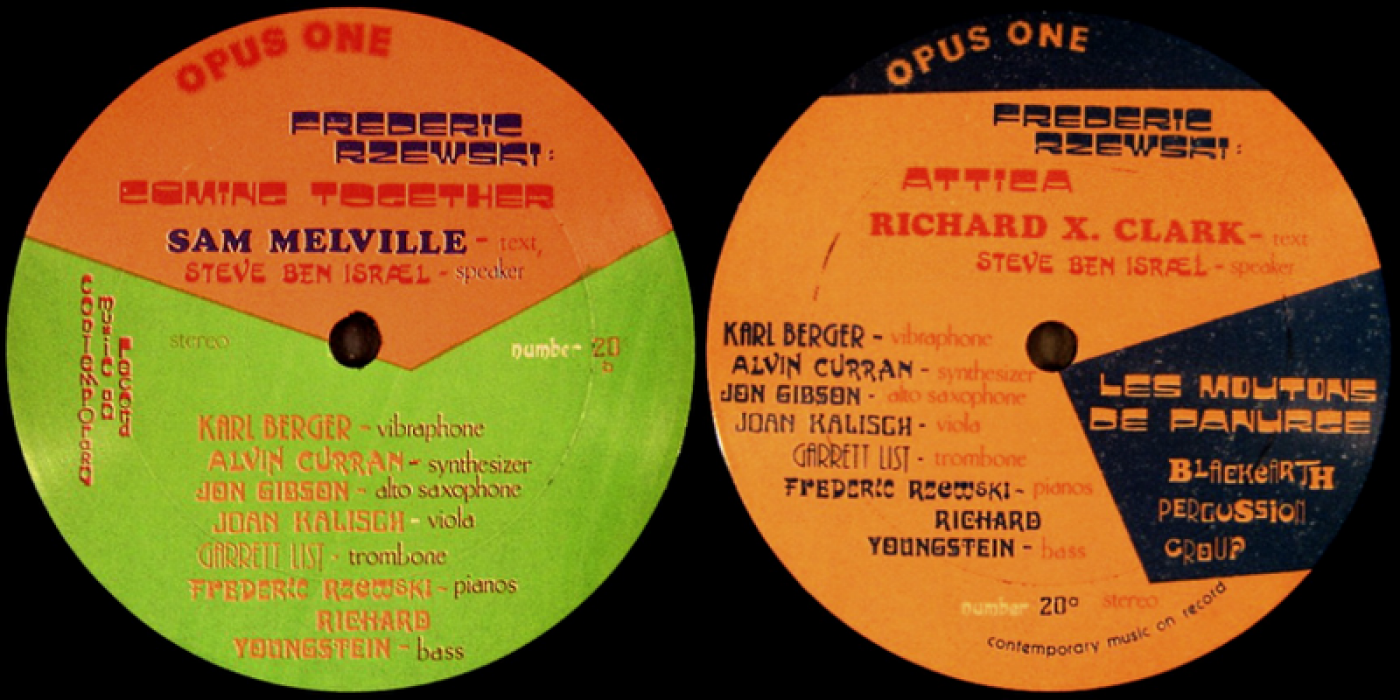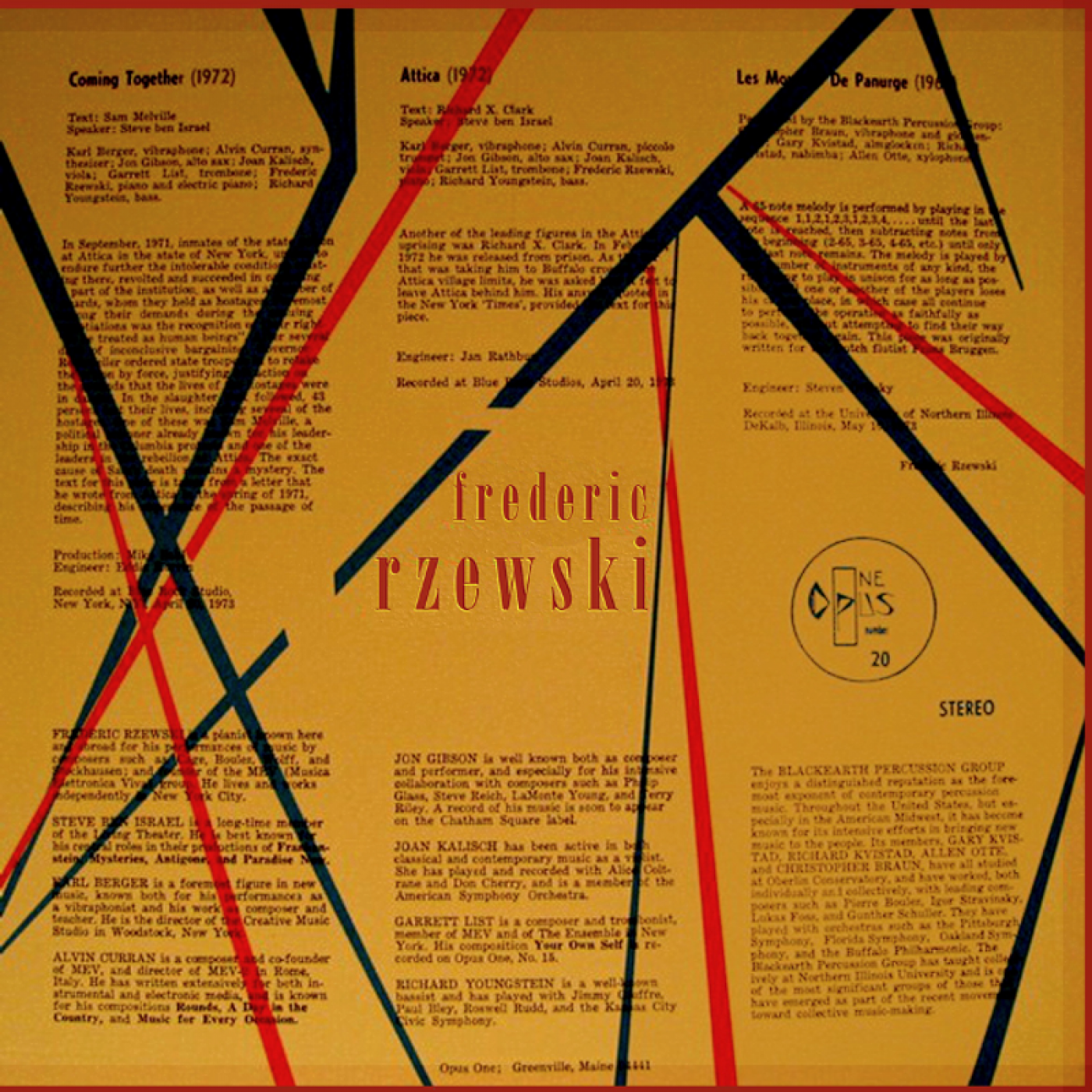Supplement #2: Julie Ault
Supplement #2: Julie Ault
on Heinz Peter Knes, Fotografische Arbeit
Concerning the work-exhibition of Heinz Peter Knes, Fotografische Arbeit, I want to share the music composition by Frederic Rzewski, Coming Together (1973). Rzewski situated the repeated recitation of a letter excerpt written in prison by Sam Melville to the dramatic arc of his ferocious minimalist score, building into a stirring clamor.
After reading Melville’s letter published in a magazine in 1971, Rzewski noted: “As I read it I was impressed both by the poetic quality of the text and by its cryptic irony. I read it over and over again. It seemed that I was trying both to capture a sense of the physical presence of the writer, and at the same time to unlock a hidden meaning from the simple but ambiguous language. The act of reading and rereading finally led me to the idea of a musical treatment.”
Melville’s letter extract reads:
i think the combination of age and the greater coming together is responsible for the speed of the passing time. it’s six months now and i can tell you truthfully few periods in my life have passed so quickly. i am in excellent physical and emotional health. there are doubtless subtle surprises ahead but i feel secure and ready. as lovers will contrast their emotions in times of crisis, so am i dealing with my environment. in the indifferent brutality, incessant noise, the experimental chemistry of food, the ravings of lost hysterical men, i can act with clarity and meaning. i am deliberate—sometimes even calculating—seldom employing histrionics except as a test of the reactions of others. i read much, exercise, talk to guards and inmates, feeling for the inevitable direction of my life.
Sam Melville was convicted for a sequence of 1969 bombings of governmental and corporate buildings in New York City, in protest of the US war in Vietnam, imperialism, and racism. Melville specifically targeted property, not people. Once incarcerated, Melville organized fellow prisoners to fight against brutality towards inmates and for prisoners’ rights. Imprisoned at the Attica Correctional Facility in rural New York, Melville was a primary force in the Attica rebellion of 1971. Hundreds of prisoners overtook the facility and held guards hostage in objection of torturous “hellhole” conditions. After four days of failed negotiations and standoff, the National Guard and New York state police reclaimed the prison in a bloodbath of violence and abuse, resulting in over fifty deaths.
See also: http://sammelville.org
Frederic Rzewski
Coming Together, 19:15 min.
Opus One, 1973
Bass—Richard Youngstein
Piano, electric piano—Frederic Rzewski
Alto saxophone—Jon Gibson
Synthesizer—Alvin Curran
Trombone—Garrett List
Vibraphone—Karl Berger
Viola— Joan Kalisch
Voice [speaker]—Steve Ben Israel
Chicago-based conductor Michael Lawanski unpacks the composition components in his blogtext, “On Frederic Rzewski’s Coming Together” (July 11, 2015):
Everything in the piece works to create in the audience some re-creation or distillation of or metaphor for prison life, while simultaneously allowing questions to arise in a listener’s mind as to what the prison itself is a metaphor for. Regarding the materials, there are elements of both composition and improvisation. The never-resting bassline, consisting of an endless, inevitable, inexorable string of 16th notes, is limited to only 5 pitches—an intentionally simple (equally intentionally populist?), pentatonic collection.
These pitches are combined and recombined, subjected to rigorous yet slowmoving processes, such that the bassline remains maddeningly familiar but never predictable. At the same time, instructions are given to the other instrumentalists that grant them a certain amount of freedom as to what to play, while at the same time drastically circumscribing their choices, and, of course, imposing on them a general form that delineates their actions as part of a musical composition. While the metaphorical correspondence between musical material and prison, instrumentalist and prisoner, musical work and day-to-day labor, may seem so one-to-one that it is almost unsubtle and heavy-handed, surely the ease of the evocation of this metaphor in a listener’s mind suggests that it is actually much more. Which is to say: if (this) music can be a metaphor for American prison life in the 1970s, surely it can be a metaphor for many other things as well. If the particular circumstances of inmates at a particular point in history can be “expressed” in music (of all things!, we might say, indignant on our artform’s behalf), surely, then we might find echoes and parallels between that situation of confinement and countless others in our existence.
Melville’s fragment is presented by Rzewski in a way that forces the audience to read it closely. Revealed one word or one phrase at a time, we are made to confront possible meanings without necessarily relying on the semantic chain of the sentence. The listeners and the speaker are therefore also cast as if in the role of writer, compelled to experience and consider every lexical item as it happens.
. . . . Rarely in musical works are the very tensions inherent in this artform itself brought to the surface so urgently, palpably, and— ultimately—forcefully. For me, every aspect of the work, “Coming Together,” from its methods to the content the incorporated text embodies and opens onto, and the implicated histories from 1969–71, as well as their current resonance, stand in affinity with Heinz Peter Knes’s practice and exhibition.
Julie Ault is an artist, curator, and writer whose work encompasses exploratory research, exhibition-making, and publishing. She frequently adopts curatorial and editorial activities as an artistic practice. Recent projects include Paper Mirror: Nancy Spero at the Museo Tamayo and MoMA PS1 (2018–19) and In Part, Writings by Julie Ault (2017). Ault is currently at work on the forthcoming volume, Hidden in Plain Sight: Selected Writings of Karin Higa.
Supplement is a collection of digital resources that explore related themes, dialogs and thought processes in the exhibition Fotografische Arbeit by Heinz Peter Knes. Contributions from various artists and writers will be made accessible via e-mail over the entire duration of the exhibition.


